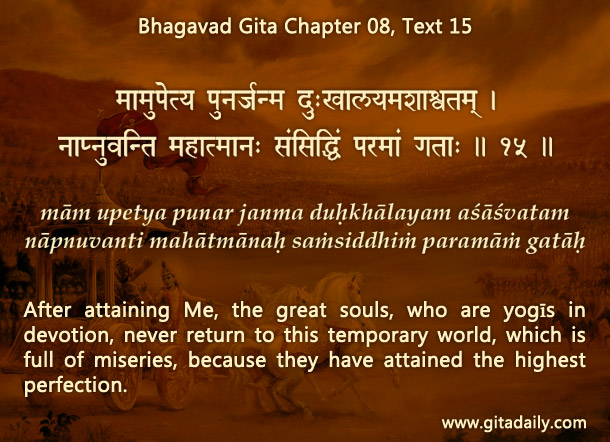Some people find the Bhagavad-gita pessimistic: “Why harp on life’s problems? Why not see its positive side?”
Actually, the Gita doesn’t harp on life’s problems – it mentions them just for impelling us to redirect our heart to life’s positive side.
To that end, Gita wisdom expands our conceptions of life and its positive side. Life, it informs us, is not restricted to a brief and brittle existence between the starting point of birth and the ending point of death. Life extends infinitely both into the past and the future, for what lives is the soul and the soul lives eternally. Each one of us is an eternal soul, beyond our perishable body.
Life is not restricted to a brief and brittle existence between the starting point of birth and the ending point of death.
And life’s positive side is not restricted to the occasional and ephemeral pleasures available at the material level. Life’s actual positive side is the life of the soul proper – the life of eternal ecstatic loving reciprocations between the soul and the all-attractive Supreme Person, Krishna, in his supreme abode.
With this expanded understanding, let’s look at the most quoted Gita verse about the miseries of material existence (08.15). Though it states that this world is miserable and temporary, its essential message is eminently positive: devotion to Krishna takes us to an eternal abode beyond this world. The same spirit runs throughout the Gita: far from harping on the world’s misery, it mentions misery as something that is transcended by bhakti-yoga.
And the positivity of bhakti is not restricted to the attainment of the next world –it encompasses this world too, for bhakti enables us to dovetail our worldly activities in devotional service and therein find spiritual fulfillment.
If we can be perceptive enough to see beyond the Gita’s incidental pessimism to its essential optimism, then we can relish life’s positive side eternally.

Explanation of article:
http://www.youtube.com/watch?v=nN2Kot6vURM

Dandvat pranam prabhuji.
Thank you so much for this erudite explanation. Never understood this verse better.
us
Mukesh